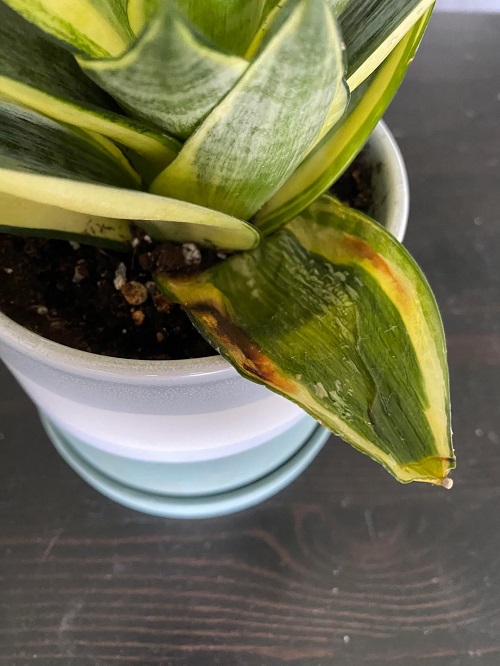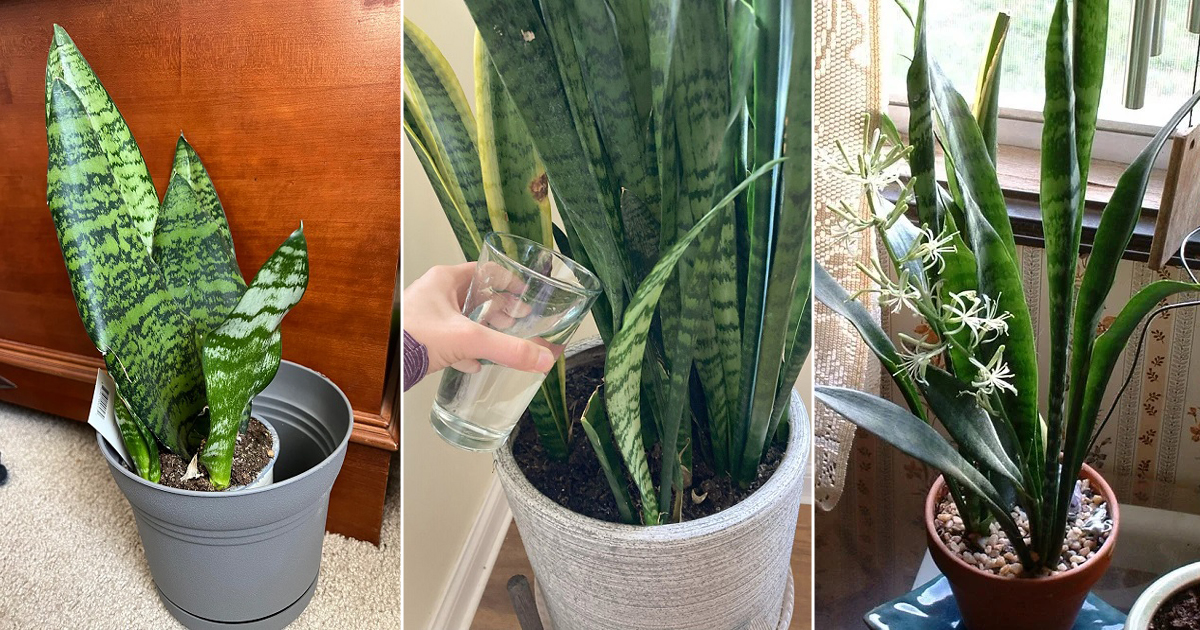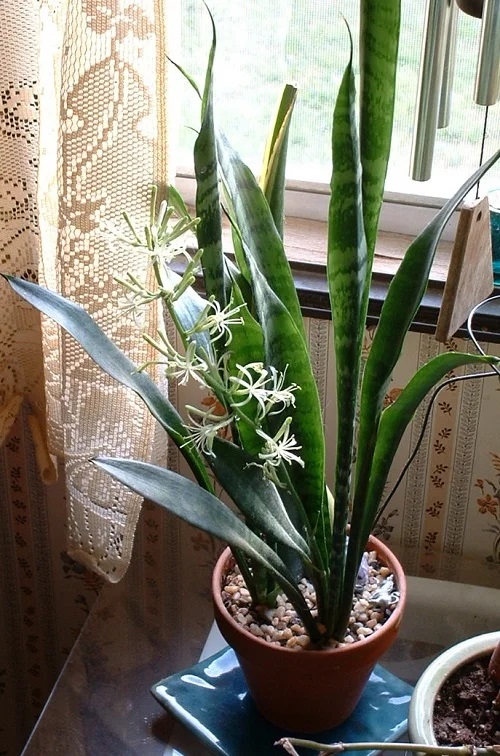Have you overwatered Your Snake Plant? Learn How to Fix It Fast with simple tricks and restore your plant’s health.
The snake plant, also called Dracaena trifasciata, is one of the most popular indoor plants. It’s easy to grow but also quite sensitive. If it doesn’t get the right amount of water and sunlight, it can get damaged. Overwatering is a common problem for snake plants. Their leaves may turn yellow and soft, and if not treated, the plant can slowly die. So, if you Overwatered Your Snake Plant? Here’s How to Fix It Fast.
Overwatered Your Snake Plant? Here’s How to Fix It Fast
1. Check the Signs of Overwatering

The first step is to look closely at your plant. Overwatered snake plants often have yellow leaves that feel soft or mushy. You might also notice a musty smell coming from the soil or even black, rotten roots. These are clear signs of water damage. Catching these early gives your plant a better chance to recover.
2. Remove the Plant from the Pot
Place your snake plant near a window or in a sunny spot during its growing season. The sunlight helps the soil dry faster. If your plant is only slightly overwatered, let the soil dry out. This can fix the problem easily. Sunlight also helps reduce excess moisture that makes the leaves soft or messy. So, moving your plant to a brighter spot is essential.
Gently take the plant out of its pot. Tap or press the sides of the pot to loosen the soil and make it easier to remove. Once the soil is loose, lift the snake plant out to expose the roots. Then, carefully clean the soil off the roots without damaging them.
3. Trim Off the Rotten Roots and Leaves
Check the roots carefully for any signs of root rot. Infected roots usually look soft, smell bad, and have brown spots. Examine the whole root system once the plant is out of its pot.
Rinse the roots to remove all the soil. This helps you see how much damage there is. Cut off all the rotten roots and keep only the healthy ones. If you leave any bad roots, the rot can spread again. After trimming, apply a fungicide to the roots to stop the fungus from coming back.
Let the roots dry for a few hours before planting them in a clean pot with fresh soil. This helps prevent pests and fungus from attacking again.
4. Let the Roots Dry Out

After trimming, place your snake plant in a warm, dry area with good airflow. Leave it out of the soil for one or two days to allow the roots to dry. This step is important because it helps stop any leftover moisture from causing more rot. Don’t worry — snake plants can handle short periods without soil.
5. Repot in Fresh, Well-Draining Soil
Repotting your snake plant in fresh soil is the final step to save it from overwatering. Do this if the soil is moldy, too wet, or mushy. It’s also helpful if the leaves have turned yellow, as new soil gives the plant fresh nutrients like nitrogen.
Take the plant out of the pot and remove the old soil. Use a new, high-quality potting mix that drains well. Before replanting, clean and disinfect the pot to get rid of any mold. After repotting, let the plant settle in its new soil for a few days before watering again. When you water, make sure not to overwater.
6. Water in the Right Way
Try watering your snake plant in the morning instead of the evening. This gives the soil the whole day to dry out. Snake plants can handle dry conditions well, but too much water and the diseases it causes can harm them.
If the soil is very dry, water might just sit on top instead of soaking in. Start watering slowly and build up to a full soak. Once the top few inches are moist, the rest of the water will absorb better.
Avoid using tap water. In many places, it contains minerals like fluoride or iron that are bad for snake plants. These minerals can block water from reaching the roots, causing them to dry out. To prevent this, always use filtered or distilled water for indoor plants.
7. Provide the Right Light and Environment
After repotting, place your snake plant in bright, indirect light. Avoid direct sunlight for a few days while it recovers. Keep it in a room with good airflow and moderate temperature. A healthy environment helps the plant rebuild its strength and encourages new root growth.
8. Watch for New Growth
In the following weeks, keep an eye on your plant. If the leaves start to feel firm again and new shoots appear, your snake plant is on the mend. Continue with your new watering routine and make sure the soil stays well-drained.















